Google UX Design Professional Certificate (2021-5)
Release date:2021, April 7
Author:Coursera
Skill level:Beginner
Language:English
Exercise files:Yes
his is your path to a career in UX design. In this program, you’ll learn in-demand skills that will have you job-ready in less than 6 months. No degree or experience required.
Prepare for a career in the high-growth field of UX design, no experience or degree required. With professional training designed by Google, get on the fast-track to a competitively paid job. There are currently 113,700 U.S. job openings in UX design with an average entry-level salary of $58,600.¹
User experience (UX) designers focus on the interaction that users have with products, like websites, apps, and physical objects. They make those everyday interactions useful, enjoyable, and accessible.
Over 7 courses, gain in-demand skills that will prepare you for an entry-level job. At under 10 hours per week, you can complete the certificate in less than 6 months.
You will create designs on paper and in digital design tools like Figma and Adobe XD. By the end of the certificate program, you will have a professional UX portfolio that includes three end-to-end projects, so that you’re ready to apply for jobs. Upon completion, you can directly apply for jobs with Google and over 130 U.S. employers, including Walmart, Best Buy, and Astreya.
This program includes over 200 hours of instruction and hundreds of practice-based activities and assessments that simulate real-world UX design scenarios and are critical for success in the workplace. The content is highly interactive and developed by Google employees with decades of experience in UX design.
You’ll learn how to complete the design process from beginning to end, including: Empathizing with users; Defining user pain points; Coming up with ideas for design solutions; Creating wireframes, mockups, and prototypes; Testing designs through usability studies; Iterating on designs based on feedback.
Through a mix of videos, readings, assessments, and hands-on activities, you’ll learn in-demand design tools, Figma and Adobe XD. You’ll even create a portfolio that includes three projects to share with potential employers to showcase the skills you learned in this program.
What you will learn in the Google UX Design Professional Certificate course:
Follow the design process: by understanding other users, identifying weaknesses, imagining solutions, building wireframes and work samples, testing and repeating the design
Understand the basics of UX research such as scheduling exploration, conducting useful research and interviewing, and producing research results
Apply basic UX concepts such as user-centered design, accessibility and equity-focused design
Build a professional UX portfolio that includes 3 complete projects: a mobile app, a responsive site, and a cross-platform user experience
Google UX Design Professional Certificate Includes:
COURSE 1: Foundations of User Experience (UX) Design
COURSE 2: Start the UX Design Process: Empathize, Define, and Ideate
COURSE 3: Build Wireframes and Low-Fidelity Prototypes
COURSE 4: Conduct UX Research and Test Early Concepts
COURSE 5: Create High-Fidelity Designs and Prototypes in Figma
COURSE 6: Responsive Web Design in Adobe XD
COURSE 7: Design a User Experience for Social Good & Prepare for Jobs
01 Foundations of User Experience (UX) Design
01 – Welcome to the Google UX Design Certificate
02 – Introduction to Course 1 Foundations of User Experience Design
03 – Michael – Get started in UX design
04 – The basics of user experience design
05 – Jobs in the field of user experience
06 – Design for a good user experience
07 – Job responsibilities of entry-level UX designers
08 – Dane – A day in the life of an entry-level UX designer
09 – Specialists, generalists, and T-shaped designers
10 – Erika – Generalist or specialist designer
11 – Work in a cross-functional team
12 – UX design jobs at different types of companies
13 – From certificate to career success
14 – Juan – A UX design career journey
15 – Mike – A UX design career journey
16 – Wrap-up Introducing user experience design
17 – Welcome to week 2
18 – Define the user, end user, and user experience
19 – Prioritize the user
20 – Key frameworks in UX design
21 – Universal design, inclusive design, and equity-focused design
22 – The importance of accessibility
23 – The importance of equity-focused design
24 – Design for the Next Billion Users
25 – Akhil – A perspective on the Next Billion Users
26 – The advantages of UX design tools
27 – Get to know platforms
28 – Design for different platforms
29 – Assistive technology
30 – Elise – The importance of assistive technology
31 – Introduction to design sprints
32 – Five phases of design sprints
33 – Benefits of design sprints
34 – Plan design sprints
35 – The design sprint brief
36 – An entry-level designer’s role in a sprint
37 – Jason – All about design sprints
38 – Design sprint retrospectives
39 – Welcome to week 4
40 – Lisa – Create a UX design portfolio
41 – Introduction to UX design portfolios
42 – Introduction to website builders
43 – Introduction to best practices for UX design portfolios
44 – Explore personal brands
45 – Start to build an online presence
46 – Create or update social media profiles
47 – Get involved in UX design communities
48 – Use writing best practices in a portfolio
49 – Network and find a mentor
50 – Overcome impostor syndrome
51 – Catherine – Conquer impostor syndrome
52 – Congratulations on completing Course 1 Foundations of User Experience Design
02 Start the UX Design Process Empathize, Define, and Ideate
01 – Introduction to Course 2 Empathize, Define, and Ideate
02 – Emily – The power of UX research
03 – Introduction to UX research
04 – Choose the right research method
05 – Understand benefits and drawbacks of research methods
06 – Craig – My journey to UX
07 – Identify types of bias in UX research
08 – Deana – Identify bias in UX research
09 – Wrap-up Integrating research into the design process
10 – Empathize with users
11 – Build an empathy map
12 – Identify user pain points
13 – Understand personas
14 – Craft user stories
15 – Consider edge cases
16 – Ayan – Real world example of edge cases
17 – Create a user journey map
18 – Consider accessibility when empathizing
19 – Understand the curb cut effect
20 – Create problem statements
21 – Define hypothesis statements
22 – Understand human factors
23 – Explore psychology principles that influence design
24 – Wrap-up Defining user problems
25 – Understand design ideation
26 – Explore lots of ideas
27 – Recognize business needs during design ideation
28 – Scope the competition
29 – Limits to competitive audits
30 – Steps to conduct a competitive audit
31 – Use insights from competitive audits to ideate
32 – Vanessa – My journey to UX
33 – Use How Might We to ideate
34 – Use Crazy Eights to ideate
35 – Consider user journeys during ideation
36 – Congratulations on completing Course 2 Empathize, Define, and Ideate
03 Build Wireframes and Low-Fidelity Prototypes
01 – Introduction to Course 3 Build Wireframes and Low-Fidelity Prototypes
02 – Karen – My path to UX design
03 – Use research to inform ideation
04 – Craig – Research informs ideation in the real world
05 – Create goal statements
06 – Introduction to storyboarding user flows
07 – Understand the two types of storyboards
08 – Introduction to wireframes
09 – Start drawing
10 – Draw your first wireframe
11 – Understand the benefits of wireframing
12 – Wrap-up Storyboarding and wireframing
13 – Welcome to week 2
14 – The basics of information architecture (IA)
15 – Create paper wireframes
16 – Transition from paper to digital wireframes
17 – Introduction to Figma
18 – Create digital wireframes in Figma
19 – Optional – Learn from Figma Create wireframes for an app
20 – Erika – Tools of the trade
21 – Use Gestalt Principles when creating wireframes
22 – Wrap-up Creating paper and digital wireframes
23 – Welcome to week 3
24 – Learn about low-fidelity prototypes
25 – Create a paper prototype
26 – Introduction to building low-fidelity prototypes in Figma
27 – Build low-fidelity prototypes in Figma
28 – Optional – Learn from Figma Create prototypes
29 – Recognize implicit bias in design
30 – Ayan – Bias in UX design work
31 – Identify deceptive patterns in UX design
32 – Explore the effects of designs that deceive
33 – Congratulations on completing Course 3 Build Wireframes and Low-Fidelity Prototypes
04 Conduct UX Research and Test Early Concepts
01 – Introduction to Course 4 Conduct UX Research and Test Early Concepts
02 – Jason – My journey to UX
03 – Understand the UX research process
04 – Get to know the seven elements of a research plan
05 – Start building a research plan project background, research goals, and research questions
06 – Continue building a research plan KPIs
07 – Continue building a research plan Methodology
08 – Continue building a research plan Participants
09 – Finish building a research plan Script
10 – Make privacy a part of UX practices
11 – Understand privacy issues
12 – Vanessa – Ethics, privacy, and data in the real world
13 – Wrap-up Planning UX research studies
14 – Welcome to week 2
15 – Introduction to usability studies
16 – Conduct moderated and unmoderated usability studies
17 – Introduction to a mock unmoderated usability study
18 – Participant A – Mock usability study
19 – Participant B – Mock usability study
20 – Participant C – Mock usability study
21 – Participant D – Mock usability study
22 – Participant E – Mock usability study
23 – Explore usability study best practices Before the study begins
24 – Explore usability study best practices During the study
25 – Deana – My job as a UX researcher
26 – Identify biases when interviewing usability study participants
27 – Reduce bias in interviews
28 – Introduction to note-taking methods during usability studies
29 – Use a spreadsheet to take notes
30 – Chikezie – My journey to UX
31 – Wrap-up Conducting research with usability studies
32 – From observations to insights
33 – Case study Improving design at Google
34 – Developing insights
35 – Gather and organize data
36 – Patterns and themes in research data
37 – Qualities of strong insights
38 – Utkarsh – Develop insights from usability studies
39 – Wrap-up Analyzing and synthesizing research results
40 – Organize insights for sharing
41 – Choose a format for sharing insights
42 – Create a strong presentation
43 – Presentation tips
44 – Heather – Deliver research insights
45 – Change designs based on research insights
46 – Change designs based on research insights demo
47 – Wrap-up Sharing research insights for better designs
48 – Congratulations on completing Course 4 Conduct UX Research and Test Early Concepts
05 Create High-Fidelity Designs and Prototypes in Figma
01 – Introduction to Course 5 Create High-Fidelity Designs and Prototypes in Figma
02 – Kunal – My journey to UX
03 – Welcome to week 1
04 – Introduction to mockups
05 – Chikezie – Transition from low-fidelity to high-fidelity designs
06 – Introduction to foundational elements of visual design
07 – Typography in UX design
08 – The importance of typography
09 – Color in UX design
10 – Iconography in UX design
11 – Introduction to layouts
12 – Use grids to guide layouts
13 – Use containment in layouts
14 – Use negative (white) space in layouts
15 – Wrap-up Starting to create mockups
16 – Welcome to week 2
17 – Emphasis in UX design
18 – Hierarchy in UX design
19 – Scale and proportion in UX design
20 – Unity and variety in UX design
21 – Apply Gestalt Principles to mockups
22 – Reflect on your progress
23 – Wrap-up Applying visual design principles to mockups
24 – Welcome to week 3
25 – Introduction to design systems
26 – Benefits of design systems
27 – Googles design system Material Design
28 – Optional – Learn from Figma Create prototypes
28 – Shopifys design system Polaris
29 – Create a sticker sheet in Figma
30 – Use a design system library in Figma
31 – Shabi – Consider assistive technologies when working in design systems
32 – Wrap-up Exploring design systems
33 – Welcome to week 4
34 – Give and receive feedback as a UX designer
35 – The basics of design critique sessions
36 – Best practices for design critique sessions
37 – Kunal – My experience with design critique sessions
38 – Introduction to a mock crit session
39 – Observe a mock crit session
40 – Turn crit session feedback into actions
41 – Iterate on mockups based on feedback from crit sessions
42 – Wrap-up Participating in design critique sessions
43 – Welcome to week 5
44 – Introduction to high-fidelity prototypes
45 – Create a high-fidelity prototype in Figma
46 – Gestures and motion in UX design
47 – Add gestures and motion in Figma
48 – Accessibility considerations for gestures and motion
49 – Jen – Design with accessibility in mind
51 – Wrap-up Creating high-fidelity prototypes
52 – Welcome to week 6
53 – Plan a UX research study
54 – Conduct a usability study
55 – Analyze and synthesize usability study results
56 – Iterate on high-fidelity designs
57 – Identify when a design is complete
58 – Document and share designs
59 – Hand off designs for production
60 – Learn from Figma – Prepare for hand off
61 – Create a case study for your portfolio project
62 – Wrap-up Testing and iterating on designs
63 – Congratulations on completing Course 5 Create High-Fidelity Designs and Prototypes in Figma
06 Responsive Web Design in Adobe XD
01 – Introduction to Course 6 Responsive Web Design in Adobe XD
02 – Dave – My journey to UX
03 – Welcome to week 1
04 – Understand responsive websites
05 – Introduction to Adobe XD
06 – Start a project in Adobe XD
07 – Jennifer – Use digital design tools
08 – Empathize with users and understand pain points
09 – Create personas
10 – Create user stories
11 – Build a user journey map
12 – Develop a problem statement
13 – Wrap-up Starting the UX design process Empathize and define
14 – Welcome to week 2
15 – Conduct a competitive audit
16 – Come up with ideas using How Might We
17 – Come up with ideas using Crazy Eights
18 – Plan information architecture for a website
19 – Explore common website structures
20 – Explore sitemaps
21 – Build a sitemap for your website
22 – Wrap-up Continuing the UX design process Ideate
23 – Welcome to week 3
24 – Explore common layouts for website home pages
25 – The basics of wireframes
26 – Plot a responsive layout
27 – Adjust page layouts based on screen size
28 – Transition from paper to digital wireframes
29 – Create digital wireframes in Adobe XD
30 – Create wireframes for additional screen sizes in Adobe XD
31 – Jay – Design with Adobe XD
32 – Refine wireframes to enhance accessibility
33 – Evaluate wireframes using Gestalt Principles
34 – Wrap-up Creating wireframes for a responsive website
35 – Welcome to week 4
36 – Understand low-fidelity prototypes
37 – Create a low-fidelity prototype in Adobe XD
38 – Plan a UX research study
39 – Conduct a usability study
40 – Reduce bias in a usability study
41 – Analyze and synthesize research results
42 – Iterate on low-fidelity designs based on research findings
43 – Wrap-up Creating and testing low-fidelity prototypes
44 – Welcome to week 5
45 – Begin to design mockups
46 – Start creating mockups for a website homepage in Adobe XD
47 – Continue creating mockups for a website homepage in Adobe XD
48 – Create mockups for a mobile website in Adobe XD
49 – Work with design systems
50 – Use external design systems in Adobe XD
51 – Create a high-fidelity prototype in Adobe XD
52 – Annotate prototypes for web accessibility
53 – Wrap-up Creating and testing high-fidelity designs
54 – Optional – Test your high-fidelity prototype
55 – Welcome to week 6
56 – Collaborate with engineering teams
57 – Hand off design specs in Adobe XD
58 – Add a project to your portfolio
59 – Understand common jobs for UX designers
60 – Explore types of companies that UX designers work at
61 – Identify where to apply for UX design jobs
62 – Scan job descriptions for key words
63 – Understand UX design resumes
64 – Dane – My advice for UX design resumes
65 – Tim – A recruiters advice for UX design resumes
66 – Update a resume based on job descriptions
67 – Wrap-up Documenting design work and searching for jobs
68 – Congratulations on completing Course 6 Responsive Web Design in Adobe XD
07 Design a User Experience for Social Good & Prepare for Jobs
01 – Introduction to Course 7 Design a User Experience for Social Good and Prepare for Jobs
02 – Case study Nest Hub Max
03 – Paolo – My journey to UX
04 – Welcome to week 1
05 – Design for progressive enhancement and graceful degradation
06 – Googles focus on the user
07 – Design across devices with the 4 Cs
08 – Differentiate between dedicated mobile apps and responsive web apps
09 – Begin the empathize phase
10 – Develop personas
11 – Build user stories
12 – Create user journey maps
13 – Define problem statements
14 – Case study Defining a user problem in the real world
15 – Begin the ideate phase
16 – Conduct a competitive audit
17 – Follow the UX design process across devices
18 – Ideate with Crazy Eights
19 – Wrap-up Starting the UX design process empathize, define, ideate
20 – Welcome to week 2
21 – Begin to wireframe
22 – Sketch paper wireframes
23 – Create digital wireframes
24 – Build a low-fidelity prototype
25 – Plan a usability study
26 – Conduct a usability study
27 – Analyze and synthesize research results
28 – Iterate on designs based on research insights
29 – Case study The importance of testing in the real world
30 – Wrap-up Creating wireframes and low-fidelity prototypes
31 – Welcome to week 3
32 – Create mockups
33 – Document a design system
34 – Build a high-fidelity prototype
35 – Plan and conduct a usability study for a hi-fi prototype
36 – Wrap-up Creating mockups and high-fidelity prototypes
37 – Welcome to week 4
38 – Design for different use cases
39 – The importance of information architecture
40 – Build sitemaps
41 – Sketch to generate ideas for a website
42 – Understand common website layouts
43 – Review two ways to create wireframes
44 – Create wireframes for different screen sizes
45 – Build a low-fidelity prototype for a responsive website
46 – Optional – Test a low-fidelity prototype for a responsive website
47 – Design mockups for a responsive website
48 – Build a high-fidelity prototype for a responsive website
49 – Optional – Test and iterate on high-fidelity designs
50 – Add a case study to your UX portfolio
51 – Wrap-up Designing a complementary responsive website
52 – Welcome to week 5
53 – Prepare a UX portfolio for job applications
54 – Introduction to the interview process
55 – Conduct pre-interview research
56 – Get to know the interviewers
57 – Build rapport with interviewers
58 – Cinthya – Interview tips from a hiring manager
59 – Use strategies to answer interview questions
60 – Jay – Interview tips from a hiring manager
61 – Develop an elevator pitch
62 – Kartik – Interview tips from an entry-level designer
63 – Present a portfolio during interviews
64 – Understand whiteboard interviews
65 – Juan – Interview tips from a UX designer
66 – Introduction to freelancing
67 – Jennifer – My journey as a freelance UX designer
68 – Create a business plan
69 – Find clients as a freelance UX designer
70 – Landing the first client
71 – Wrap-up Finding a UX job
72 – Congratulations on completing Course 7 Design a User Experience for Social Good and Prepare for Jobs
73 – Congratulations on completing the Google UX Design Certificate!
74 – Recap of the certificate program
[Coursera] Google UX Design Professional Certificate (2021-5)_Subtitles.7z



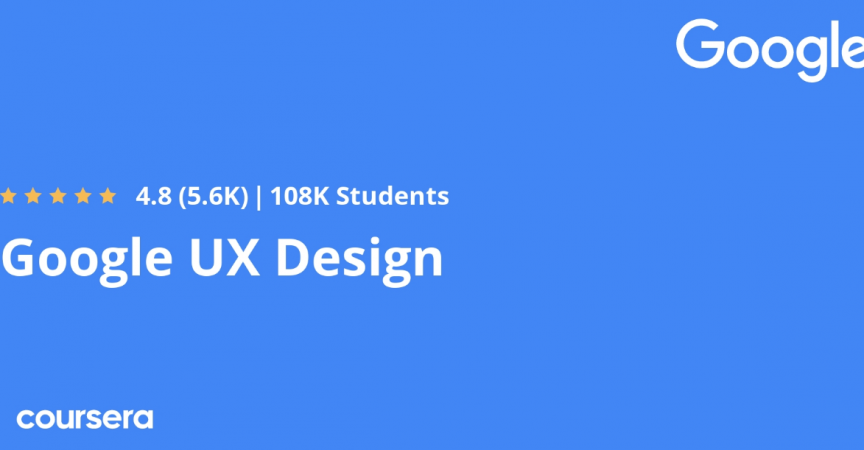

 Channel
Channel
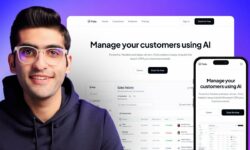
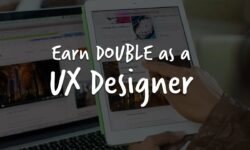
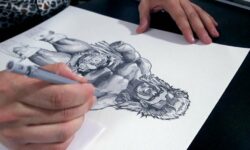
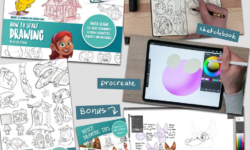
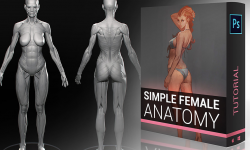

Thank you for this! Could you get this one:
Cubic Worlds (early access):
https://academy.cgboost.com/p/cubic-worlds
https://class101.co/collections/digital-drawing/products/angelofernandes
that’s a hard work indeed!
,here are related ux courses from Strategyzer which worth 1k
Mastering Business Models
https://mega.nz/folder/###
Mastering Value Propositions
https://mega.nz/folder/###
how is this related to CG topic?
It’s Ux / Product design courses which is exectly like this course and other ones in the library here.
Hopefully it help
Thanks. I knew we have it but kind find where exactly. Anyway, let it be dipped, maybe someone can find it with this name ))
Why can’t I access that link?